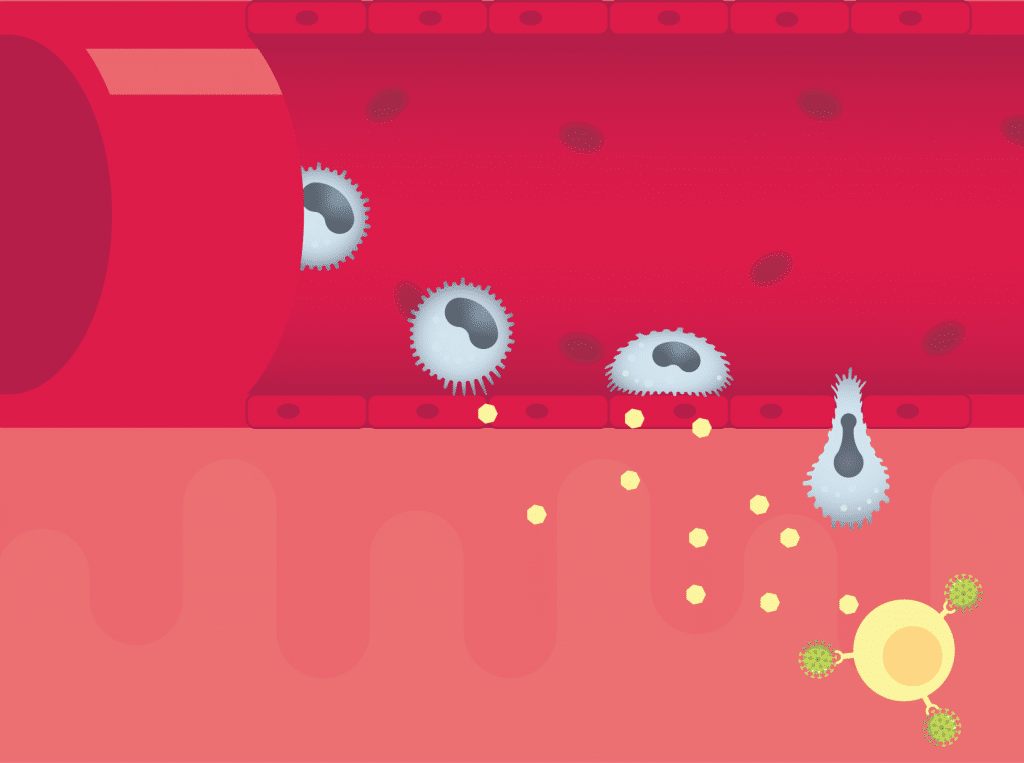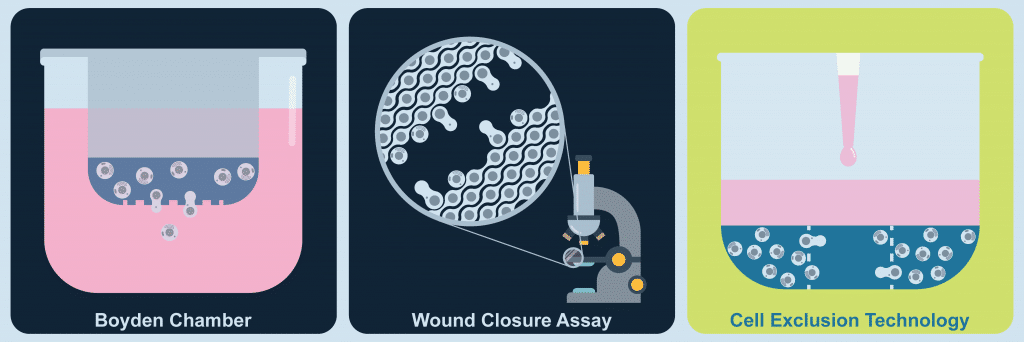Cell Migration Assay Applications: Research
Understanding cellular invasion and migration is important for studying a wide range of biological processes. By observing the directed rate of movement of cells in response to chemical or mechanical signals, researchers can investigate processes as varied as metastasis and wound healing. Historically, this has proven difficult due to a lack of efficient and reproducible methods for quantitatively assessing cell migration.
Cell migration assays were developed to help researchers overcome this analytical stopping block, providing the means for quantifying a broad range of cellular functions with accuracy.

Brief History of Cell Migration Assays
One of the earliest cell migration assays developed for research applications was the Boyden chamber. Otherwise known as the transwell migration assay, the Boyden chamber comprised a cylindrical cell culture insert that was placed within the wells of a multi-well plate. Within this insert was a permeable membrane of known pore size and volume. Sample cells were seeded into a liquid medium in the insert while a serum, or chemoattractant, was loaded into the well beneath. After incubation, the insert was removed and the number of cells in the serum could be quantified, giving an accurate understanding of cell migration characteristics.
This was a pioneering tool for studying a range of biological processes, including chemotaxis, haptotaxis, and transmigration. Though labor-intensive and restricted to analysis at a single time point, Boyden chambers are still widely used in biological research today.
An alternative method based on live-cell microscopy was developed to offer greater insights into specific processes associated with wound healing. The aptly-named wound closure assay is based on a confluent cell monolayer and a manual optical microscope or a time-lapse microscopic camera. A scratch is made in the monolayer and cell migration is measured by observing the rate at which the wound heals at specific time intervals. This method has low reproducibility and is based on subjective analysis, thus offers limited quantitative insights into cellular migration.

One of the most advanced cell migration assays for biomedical research applications is known as cell exclusion migration. At Platypus Technologies, this is the technique that we have championed in our OrisTM product range. It is superior to both transwell assaying and wound closure in terms of accuracy, throughput, reliability, and depth of information, having provided a wealth of information for researchers in drug discovery, wound healing, and cancer research.
Learn More: What is a Cell Migration Assay?
Cell Migration Assays from Platypus Technologies
Platypus Technologies supplies a range of cell migration assays and other analytical systems for advanced biological research applications. If you would like to learn more about how our products can elevate your testing parameters, or wish to discuss specific partnership opportunities, simply contact us today.